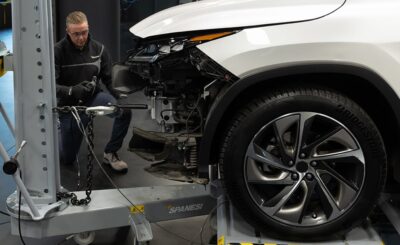The transmission speed sensor plays a vital role in modern vehicles by monitoring how fast the transmission’s output shaft is spinning. This data is sent to the engine control unit (ECU) and transmission control module (TCM), which use it to determine proper shift timing, torque converter operation, and vehicle speed readings. Most vehicles have two types of speed sensors: one on the input shaft and another on the output shaft. These sensors help maintain smooth gear transitions and accurate speedometer readings.
Delayed or Harsh Gear Shifts
One of the most common signs of a faulty transmission speed sensor is irregular gear shifting. Since the sensor provides input about vehicle speed and load, incorrect or missing data can confuse the TCM, causing it to delay or harshly execute shifts. Drivers may notice the transmission hesitating when moving from one gear to another or experience abrupt, jerky transitions. In automatic vehicles, the system may even become stuck in a lower gear or go into limp mode to prevent further damage. This is where you need to choose the Auto Repair in Clearfield, UT based services now.
Inaccurate Speedometer Readings
A faulty speed sensor can wreak havoc on several key functions within your vehicle, most notably affecting your dashboard speedometer. The sensor, typically located on the transmission, sends signals indicating the vehicle’s speed. If this sensor malfunctions and transmits inaccurate or inconsistent data, the speedometer might display fluctuating, erratic readings or even cease to operate entirely. This presents a safety hazard, particularly when navigating zones with enforced speed limits, as judging your actual speed becomes significantly more challenging. Beyond the speedometer, a faulty speed sensor can also compromise the functionality of your cruise control system. Since cruise control depends on reliable speed data from the sensor, it may unexpectedly disengage while activated or fail to engage in the first place. Addressing a malfunctioning speed sensor promptly is crucial for maintaining accurate speed readings and ensuring the proper operation of vital vehicle features.
Illuminated Warning Lights
Another key indicator of a bad transmission speed sensor is the appearance of warning lights on your dashboard. You might see the check engine light or transmission warning light appear. Diagnostic trouble codes like P0720 (Output Speed Sensor Circuit) or P0715 (Input Speed Sensor Circuit) may also be stored in the vehicle’s ECU. These codes help technicians identify the root cause and confirm whether the speed sensor is the source of the issue.
Poor Overall Drivability
Beyond gear shifts and speed readings, a faulty transmission speed sensor can degrade overall drivability. The engine and transmission depend on synchronized communication, and when speed data is off, fuel efficiency and throttle response may suffer. Drivers might feel a lack of power, irregular engine revs, or unresponsiveness when accelerating. Left unresolved, a bad sensor can lead to increased wear on transmission components and higher repair costs over time. That’s why early detection and replacement of a failing speed sensor is crucial to maintaining smooth, reliable vehicle performance.








